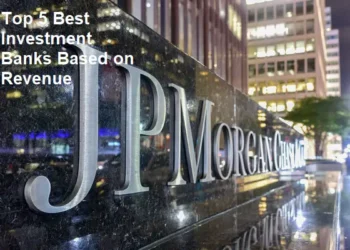The accounting cycle is a continuous process used by companies to follow the flow of money and financial information. This is very important because it helps companies understand their financial condition and make the right business decisions. The accounting cycle also helps companies meet financial disclosure obligations, such as preparing annual financial reports and filing tax returns.
This article will discuss the accounting cycle, including its definition, stages, benefits and others. So, continue to pay attention to the discussion below.
Definition and Stages of the Accounting Cycle
The accounting cycle is a continuous process used by companies to follow the flow of money and financial information. This begins with the collection of financial data and ends with the presentation of financial statements. The accounting cycle consists of several stages, including data collection, journalizing, aggregating, and presenting.
Data collection is the first stage in the accounting cycle. This stage involves identifying and measuring financial transactions that occur in the company. This data is then recorded in the form of a journal, which is a book that records financial transactions sequentially by date.
After the financial data is collected, the next step is journalizing. This stage involves recording financial transactions in journals, which are then processed into financial reports. The financial statements consist of a balance sheet, income statement and cash flow statement.
The next stage is merging, which is the process of combining all financial reports from various departments and business units within the company. This allows companies to see an overall picture of their performance and financial condition.
Finally, the presentation stage involves preparing financial reports to be provided to company owners, management, creditors and investors. These financial reports must comply with applicable accounting standards in order to provide useful information for those who need it.
Each stage in the accounting cycle is very important and interrelated. The data collection process requires accurate recording in journals so that it can be processed into proper financial reports. The financial statements are then combined to form an overall picture of the company’s performance and financial condition. And finally, financial reports are presented to those who need this information.
Benefits of the Accounting Cycle
The accounting cycle has several important benefits for companies, including:
Helps measure performance: Financial reports generated from the accounting cycle can help companies measure their performance over time. It is important to understand whether the company is performing according to the goals set or not.
Help make the right business decisions: Financial reports generated from the accounting cycle can help companies in making the right business decisions. This is because the financial statements provide clear information about the company’s financial condition, such as whether the company has enough funds to increase the number of employees or buy new equipment.
Meet financial disclosure obligations: Companies are often required to present financial reports to external parties, such as investors and creditors. The accounting cycle helps companies meet this obligation by providing accurate and timely financial reports.
Helps improve efficiency: The structured accounting processes included in the accounting cycle can help companies improve efficiency by avoiding errors and duplication of work.
Example of the Accounting Cycle
The following is an example of the accounting cycle within a company that helps illustrate how it operates:
* Data Collection: The company receives orders from customers for the products it sells. The company records the transaction in the sales journal by recording the amount paid by the customer.
* Journalizing: Sales transactions are then processed into the company’s income statement. This report shows how much profit the company generates from selling these products.
* Merger: A company’s income statement is then combined with other financial statements, such as a balance sheet and cash flow statement, to form an overall picture of the company’s performance and financial condition.
* Presentation: The consolidated financial statements are then presented to company owners, management, creditors and investors. This report provides useful information about the performance and financial condition of the company.
This Accounting Cycle covers everything from analyzing, measuring, and recording transactions to adjusting balances and closing. This Accounting Cycle is what keeps a company’s financial statements accurate, this can also be your consideration in making business decisions in a smart way while attracting investors and lenders.
But many small and medium business owners don’t understand what the Accounting Cycle is or how it works. Below I will briefly explain all the steps of this accounting cycle, of course, to help the work of an accountant in a company that operates in a systematic and coherent manner. So, this Accounting Cycle is a series of steps that are repeated in the same order from each period, then the culmination of these steps is the preparation of financial reports.
Some companies usually prepare financial reports quarterly, while others prepare them annually. This means that companies that use quarterly timeframes can complete their entire Accounting Cycle every three months, while companies that use annual timeframes only complete one Accounting Cycle in a year.
More about the Accounting Cycle
The way to understand the accounting cycle is to understand the concept of closing the books. Maybe you have worked or are currently working in a company and are familiar with the term closing the book.
Closing the book is the last process of the accounting cycle before starting the continuation cycle. Normally a company will close the book once a month. After closing the book, all recording and calculation of profits and losses for that month will be finalized.
And will roll over for the next month’s accounting cycle after the previous period has been successfully closed. In the past, if you closed the book, it was impossible to finish it in the current month. For example, in December the last day is the 31st. Mostly 2 weeks after the end of the new month, you can close your books. Why? Because all the processes are very manual.
Once there is information technology, everything can be easily generated. The key word is only one as long as the journaling process is correct. Nowadays, an accountant just needs to make a journal in the information system.
As long as the journal process is correct, all reports will be generated automatically. After having an accounting information system like this, it is possible to be able to close on time at the end of the month.









